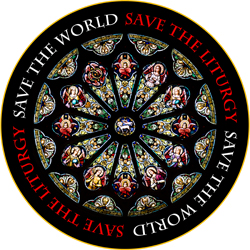When the English Missale Romanum appeared in 1970, it was clear we had been handed a paraphrase instead of a translation. As a young priest required to use these texts, I quickly determined that something needed to be done to return to the people of God what Father Ryan dubs “their baptismal birthright”—that is, an English liturgy that seeks to convey all the depth, truth and beauty of the original Latin. By 1992, I had assembled a team of scholars who produced an alternative translation of the Ordinary of the Mass and presented that effort to the Bishops’ Committee on the Liturgy in Washington, D.C., and the Congregation for Divine Worship in Rome. Hostility was the response from Washington—copies of our draft were gathered and destroyed at the bishops’ meeting—while Rome expressed a guarded interest in our project.
Ultimately, the Holy See came to the realization that many of the vernacular translations of the liturgy were problematic. (English was not the only example, just one of the more egregious.) In 2001 the Congregation for Divine Worship promulgated Liturgiam Authenticam setting forth a coherent philosophy of translation. The document called for revised translations in keeping with these norms and the establishment of an oversight committee, Vox Clara, to ensure the fidelity of future translations...
What curial officials and the pope are arguing for, with the enthusiastic support of junior clergy, is not a moribund “rubricism” but a genuine ars celebrandi that makes the sacred mysteries palpable. Not a few observers have noted that much of the liturgical change that occurred after the council—both officially sanctioned as well as in explicit violation of church law—would have been unthinkable to the council fathers. What is required now is a careful re-building process. Is this “turning back the clock”? In some sense, it is. Permit me a mundane example. If a man is told by his physician that he must lose 50 pounds or face serious problems, he must “turn back the clock” to the time when he was lighter in order to save his life. Mutatis mutandis—that is what the church at the highest levels is calling us to do.... We are warned by Father Ryan to expect “discredit to the church” and “disillusionment to the people” if the new translation sees the light of day. He tells us of the “chilling reception” it has received in South Africa, in spite of a “careful program of catechesis in the parishes.” I beg to differ. There was no “program of catechesis” to speak of in South Africa and, in fact, some liturgical observers even argue that the translation was thrust onto the faithful precisely to cause a negative reaction. Having conducted several workshops on the new texts over the past year, I can only attest to very positive reactions, from clergy and laity alike.
How did the final texts receive such overwhelming support from the American bishops, if they are so bad? Father Ryan contends that the bishops were just “worn down” by the Holy See and so caved in. I disagree. The majority of the bishops saw the merit of the work and were tired of the delaying tactics of a vocal if tiny minority of opponents. Is this translation perfect? Of course not. No translation is, but we ought never make the best the enemy of the good. It is a vast improvement over the uninspiring, banal and all-too-often theologically problematic texts we have been using for nearly 40 years. The New Testament speaks of chairos, an especially fortuitous moment. We are approaching a liturgical chairos for English-speaking Catholics, which we should embrace with gusto.
Thursday, 14 January 2010
Father Stravinskas knocks one out of the park, and suggests we seize this chairos
In the current America Magazine the editor of The Catholic Response, mounts a vigorous defense of the new translation, and provides a response to the somewhat whiny essay of Father Michael Ryan in the same periodical.
Subscribe to:
Post Comments (Atom)




No comments:
Post a Comment